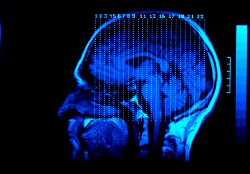A magazine where the digital world meets the real world.
On the web
- Home
- Browse by date
- Browse by topic
- Enter the maze
- Follow our blog
- Follow us on Twitter
- Resources for teachers
- Subscribe
In print
What is cs4fn?
- About us
- Contact us
- Partners
- Privacy and cookies
- Copyright and contributions
- Links to other fun sites
- Complete our questionnaire, give us feedback
Search:
Something special in the brain

On the face of it faces are easy. We all recognise friends and family, and we can tell how they are feeling by the look on their face. But if we look inside our brains we find that the whole process of understanding faces, which scientists call face perception, is far from easy. It’s also proving hard to work out whether our brains treat faces as a special case or not.
Are there places for faces?
Our brains seem to work particularly hard at recognising and processing faces. That’s perhaps not surprising as we are social animals. We live in groups and faces are the way we often signal our intentions – if I look angry avoid annoying me – or identify who we are interacting with. Inside our skulls, at certain spots in our brains, are millions of neurons that seem to respond to faces and do the work for us. These areas, landmarks on the wiggles on the surface of our brain, occur mostly on the right hand side. But how do we know these places take care of face perception? Well, we can use scanners that measure the amount of blood going to particular brain areas when doing particular things. When we look at faces certain areas light up on the scans, flooding with more blood as they crack on with the face processing business. Some experiments also suggest that the face processing activity differs between men and women: in men the greatest activity happens on the right side of the brain and for women it’s the left. Why? That’s yet to be discovered.
Faces vs things
While some think that those special parts of the brain only process faces, others argue that a face is just another sort of ‘thing’ to process. The reason, they say, for the increase of brain activity for faces in particular is that faces are hard. Most faces on the whole are similar to one another, and it’s far more difficult to tell the difference between your mates’ faces than, say, the difference between their houses. So it would be no surprise that it takes more effort, so more blood to the brain, and thus those areas would light up in a brain scan. Some experiments have, in fact, shown that the same brain areas are active when we try to tell the difference between types of cars or types of birds, so perhaps faces aren’t that special after all?

Baby look at that
Using an experimental method called ‘preferential looking’ researchers have shown that babies spend more time looking at faces than at other things. The experiment is simple: on the right side of a screen is a face, and on the left side all the parts of a face in a jumbled order. Video recordings show that babies (even some less than an hour old!) tend to spend longer looking at the face than the jumbled parts. Both pictures contain the same information, just presented in a different way. That suggests faces do have a special place in our brains after all!
So has the notion of special brain processing for faces had its chips? The jury is still out.


